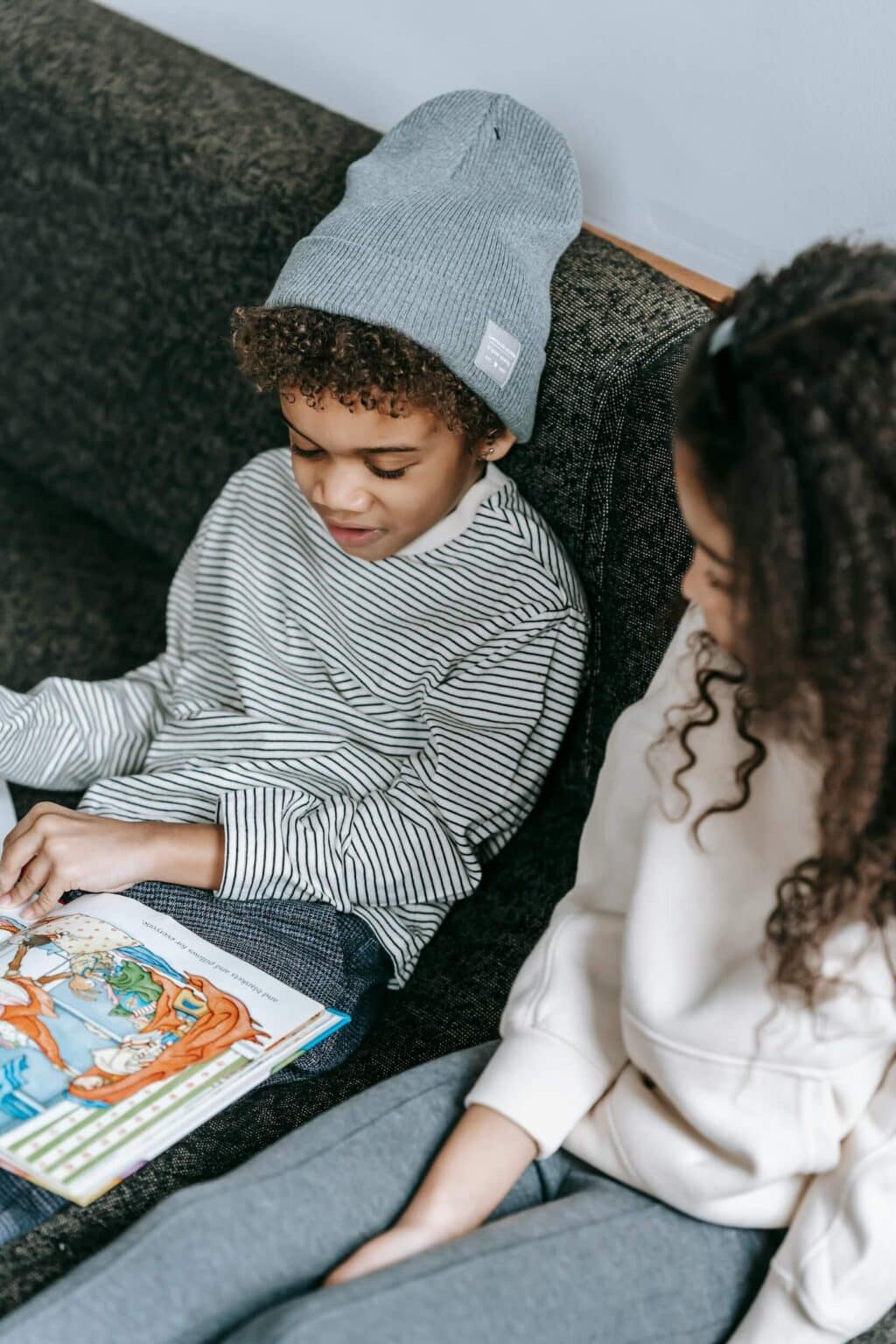Have you ever dreamt of becoming the next Roald Dahl or Jacqueline Wilson? Whether you’re an aspiring children’s fiction author or an experienced writer venturing into the world of children’s literature, here are seven tips from the experts to help you craft engaging and memorable stories for young readers.
Find an idea that inspires you
Before you put pen to paper, the first thing you’ll need is a compelling idea. This is important because it will not only fuel your creativity but also infuse authenticity and passion into your writing, ultimately engaging young readers in a meaningful way.
Patrice Lawrence, awarding-winning children’s author and tutor of Curtis Brown Creative’s six-week online Writing YA & Middle Grade Fiction course, says: “When you can’t think of a topic to write about, try playing with some of the possibilities below – I find them to be rich sources for ideas.”
- Family stories about relatives including – no, especially – the unbelievable family myths. Your own memories about you when you were a child – including your childhood and adolescent fears.
- Overheard conversations – listen to the young people and children in your life.
- Existing narratives. Maybe you’re interested in the untold story of a period or character from history. Myths, legends and fairy tales are also great starting points for children’s fiction, reshape them for today’s readership.
- Current political, environmental and social concerns. Particularly things that impact children today.
Decide on your audience
The key to successful children’s fiction lies in understanding the age group you’re targeting. Children of different age ranges have distinct interests, reading abilities, and levels of comprehension. Tailor your language, themes, and narrative complexity to suit your target audience.
- Picture books are illustrated stories usually 32 pages long, with short manuscripts (around 500-1,000 words). They are stories aimed at 2- to 6-year-olds, designed for parents to read aloud.
- Young fiction for 7- to 9-year-olds is usually around 8-12,000 words. The protagonist will be around 9 or 10, and humour features strongly in lots of books for this age group. These are the first chapter books that children encounter; they will help young readers gain confidence to start reading by themselves.
- Middle grade books follow on from the short chapter books that are often read by children in infant school when reading skills are still being developed. These books are broadly targeted at children aged from 8- to 12-year-old – the main characters are always children, though they’re often a little older than the assumed readership. The average word count is between 30,000 and 40,000 words.
- YA books are targeted at teens of secondary school age (11- to 16-year-olds). YA fiction often explores more mature issues and is more likely to deal frankly with sex, tackle challenging issues and adult relationships, and can feature moderate swearing. In terms of length, YA books are often around 70,000 words – much the same as a novel for adults.
Create a relatable protagonist
Protagonists are crucial in children’s fiction as young readers often draw inspiration and guidance from characters who mirror their own evolving perspective on the world.
Patrice Lawrence says: “It’s important to have characters your readership can relate to. Start by looking at how old your characters should be. The perceived wisdom is that children and teenagers will generally read books that feature characters who are their own age or older – but usually won’t read books about characters younger than themselves.”
She continues: “There are only four years between being eight and being twelve, but those are four mighty years with huge changes in a child’s life. A 16-year-old and 7-year-old both go to school, but their experiences of the school day are likely to be very different due to the additional pressures that come with getting older. I would strongly recommend spending some time thinking about the age of your potential readership when you’re creating your characters – and if you already have a character in mind, consider whether you can make your story relatable to more readers by making your character a couple of years older, or younger.”
Sarah McIntyre, renowned author-illustrator and tutor of Curtis Brown Creative’s six-week online Illustrating a Children’s Picture Book course adds:
“This is also true if you’re illustrating a picture book. Make sure you create a strong, sympathetic central character. Ideally this should be a character that readers can connect with, which touches your heart and which can potentially be used in further stories.”
She continues: “Don’t over-complicate your drawings unnecessarily. If you look at the characters people love, many of them are composed of very simple shapes. Think of Mickey Mouse, Calvin, Peppa Pig … And there’s a reason for this: The simpler the character, the more we can project ourselves onto it.”


Ask yourself questions
It can be useful to get into the habit of asking yourself pertinent questions throughout the writing process. These questions serve as guideposts, directing the narrative and ensuring a cohesive and engaging storyline.
Sarah McIntyre says: “If you’re stuck or have writer’s block, sometimes the best way to get an idea for a drawing or a book can be to ask yourself ‘what if’ questions. Start with something preposterous but then follow it up very rationally. Anyone can come up with a silly idea – the real humour and interest comes from working out the logistical details.”
Read recent children’s fiction
Reading recent children’s fiction will help you gain insights into current trends, narrative styles, and thematic elements that resonate with young readers.
Catherine Johnson, prize-winning author and tutor of Curtis Brown Creative’s three-month online course Writing YA & Children’s Fiction author says: “It’s vital to read widely. I guarantee that for any problem you have with your writing, you’ll find the answer in an existing novel.”
She continues: “If you are lucky enough to have a local independent bookshop with a decent-sized children’s section, talk to the bookseller about what’s new and exciting. A good bookshop will help you see the trends.
Check out book awards: The Carnegie is the most prestigious but there is also a slew of regional and local awards. Funny awards – The Lollies, The Bookseller’s Young Adult Prize, Radical books – Little Rebels – you name it, there’s a prize. Take a look at the winning books.
Make sure that you read books written for the age group you’re writing for so that you can understand your genre and what children are reading right now. It will help you sort out tone.”
Read your story out loud
Reading your writing out loud to yourself provides a fresh perspective on the narrative flow, dialogue, and overall rhythm of the story.
David O’Connell, renowned author-illustrator and tutor of Curtis Brown Creative’s six-week online Writing a Children’s Picture Book course says:
“Better still, get someone else to read it out loud. It’s easier to hear mistakes or sentences that aren’t working. This goes double if you’re writing a rhyming story for a picture book. If you find yourself tripping over your own words, then your readers are going to as well.”
He continues: “Don’t forget that a young child is unlikely to be reading the book by themselves. A parent or other adult will be reading to them (probably repeatedly!). It’s a performance, one that the child can join in. Having a repeated refrain or chorus can make it a shared experience between reader and audience.”
Finish the story
Don’t fall at the initial hurdle of completing your story. Immerse yourself in the storytelling process and the craft and refinement will follow.
David O’Connell says: “A complete story or story plan marks the difference between a writer and someone who wants to write. Get your story onto paper. Use whatever words you like, make it as long as you like. Forget about grammar. Just get the story written and finished, with a proper, satisfying ending. The crafting comes next. With experience, you’ll edit as you go along.”
This is a paid partnership in collaboration with Curtis Brown Creative
Find out more about Curtis Brown Creative’s online writing courses here.






COMMENTS ARE OFF THIS POST